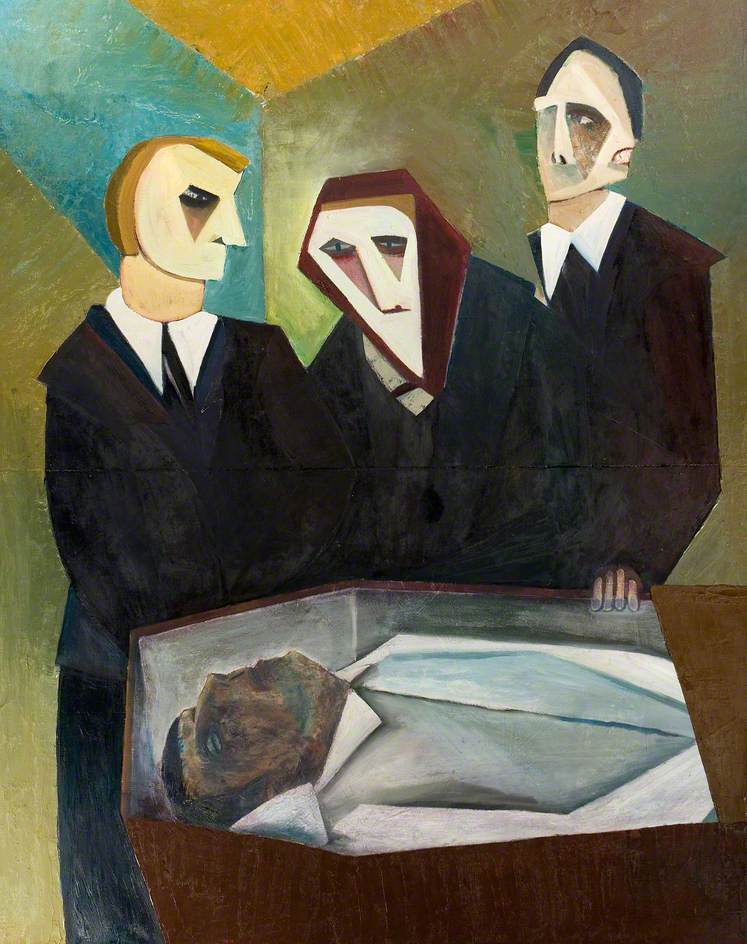Things to think about for viewing a person in a coffin

Viewing a person in a coffin can evoke a range of emotions and thoughts. Here are a few things to consider:
- Reflection on Life: This moment can prompt you to think about the person’s life, their impact on others, and the memories you shared. It can serve as a reminder of the fragility of life.
- Cultural Practices: Different cultures have unique rituals surrounding death and mourning. Observing these can deepen your understanding of how societies cope with loss.
- Personal Mortality: It’s natural to confront your own feelings about mortality when faced with death. This can lead to introspection about how you want to be remembered.
- The Physical Body: The body may appear different than you remember. This can challenge your perceptions of identity and how we associate our loved ones with their physical forms.
- Emotional Release: Allowing yourself to grieve in this space can be a crucial part of the healing process.
Did you know that in some cultures, people celebrate the lives of the deceased with elaborate festivals, focusing on joy rather than sadness? This highlights the diverse ways we approach the concept of death and remembrance.
Decoration and flowers for viewing a person in a coffin
When it comes to decorating for a viewing, flowers and other elements can play a significant role in honoring the deceased and creating a comforting atmosphere. Here are some ideas:
Flowers
- Types of Flowers:
- Roses: Symbolize love and respect; white for purity, red for love.
- Lilies: Often associated with funerals, symbolizing the restored innocence of the soul.
- Chrysanthemums: In many cultures, they represent death and are commonly used in funeral arrangements.
- Carnations: Popular for their long-lasting nature; often used in funeral wreaths and sprays.
- Orchids: Symbolize beauty and strength, offering a more exotic touch.
- Arrangements:
- Casket Sprays: Flowers arranged on top of the coffin, often reflecting the deceased’s favorite blooms or colors.
- Standing Sprays: Large floral displays that can be placed near the viewing area.
- Wreaths: Circular arrangements that symbolize eternity; can be placed at the entrance or around the coffin.
- Color Schemes:
- Choose colors that reflect the personality of the deceased or their favorite colors.
- Soft pastels can create a serene atmosphere, while vibrant colors can celebrate a joyful life.
Decorations
- Personal Items: Consider including personal items that reflect the deceased’s hobbies, interests, or achievements, such as photos, awards, or mementos.
- Candles: Soft lighting can create a peaceful ambiance. Candles can symbolize the light that the deceased brought into the lives of others.
- Memory Table: A table displaying photos and memorabilia can invite guests to share stories and memories, fostering connection and remembrance.
- Comfort Items: Items like blankets or cushions can make the viewing area feel more inviting, especially for grieving family members.
- Themed Decor: If the deceased had a specific passion (like gardening, music, or travel), incorporating elements of that theme can add a personal touch.
Creating a respectful and meaningful space can help those in attendance find solace and celebrate the life of the person they are mourning.
Different types of coffin lining
Coffin linings can vary widely in terms of materials, styles, and colors, each offering a unique aesthetic and emotional significance. Here are some common types of coffin linings:
1. Satin
- Description: A smooth, shiny fabric that gives a luxurious look.
- Pros: Soft feel and elegant appearance; often used in high-end coffins.
2. Velvet
- Description: A rich, plush fabric that adds a sense of warmth.
- Pros: Offers a classic, traditional look and a soft texture.
3. Cotton
- Description: A natural, breathable fabric that can be soft and comfortable.
- Pros: Generally more affordable and available in various colors and patterns.
4. Silk
- Description: A delicate, luxurious fabric often used for premium coffins.
- Pros: Elegant and smooth, silk can convey a sense of refinement.
5. Polyester
- Description: A synthetic fabric that can mimic the look of more expensive materials.
- Pros: Durable, easy to clean, and often more cost-effective.
6. Linen
- Description: Made from flax, linen has a natural, textured appearance.
- Pros: Breathable and eco-friendly, offering a simple, rustic look.
7. Faux Leather
- Description: A synthetic alternative to leather that can provide a sleek look.
- Pros: Often more affordable and easier to maintain than real leather.
8. Embroidery or Decorative Patterns
- Description: Some linings may feature embroidered designs or patterns.
- Pros: Personalizes the coffin and can reflect the deceased’s interests or personality.
9. Custom Linings
- Description: Some providers offer the option to create custom linings that can include photos, messages, or specific colors.
- Pros: Highly personalized, making it a unique tribute to the individual.
Choosing a coffin lining is often a personal decision for families, reflecting the deceased’s personality and providing comfort during a difficult time.
Recommended Posts

Why is choosing a coffin for someone so stressful?
April 16, 2025


